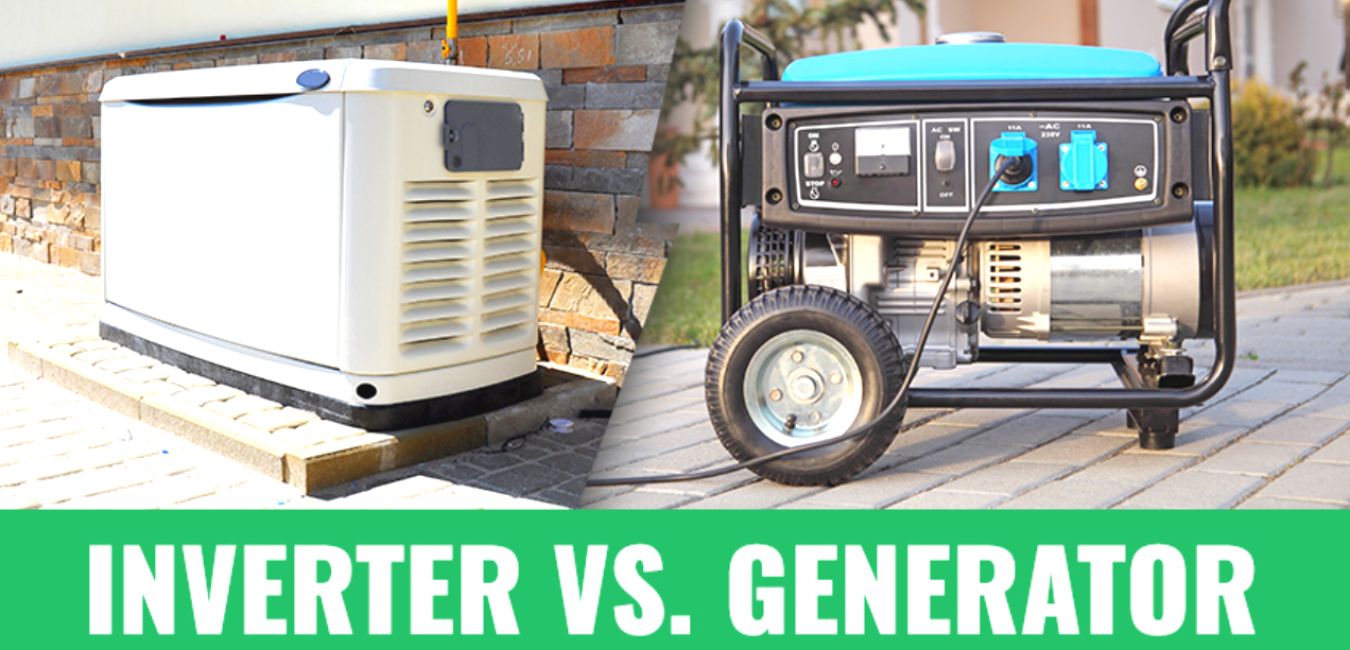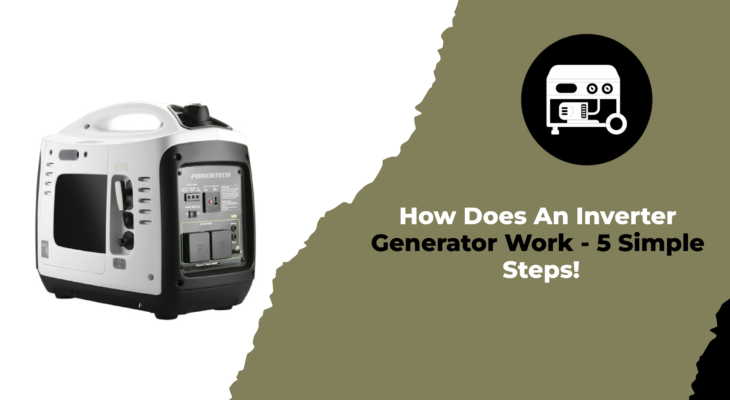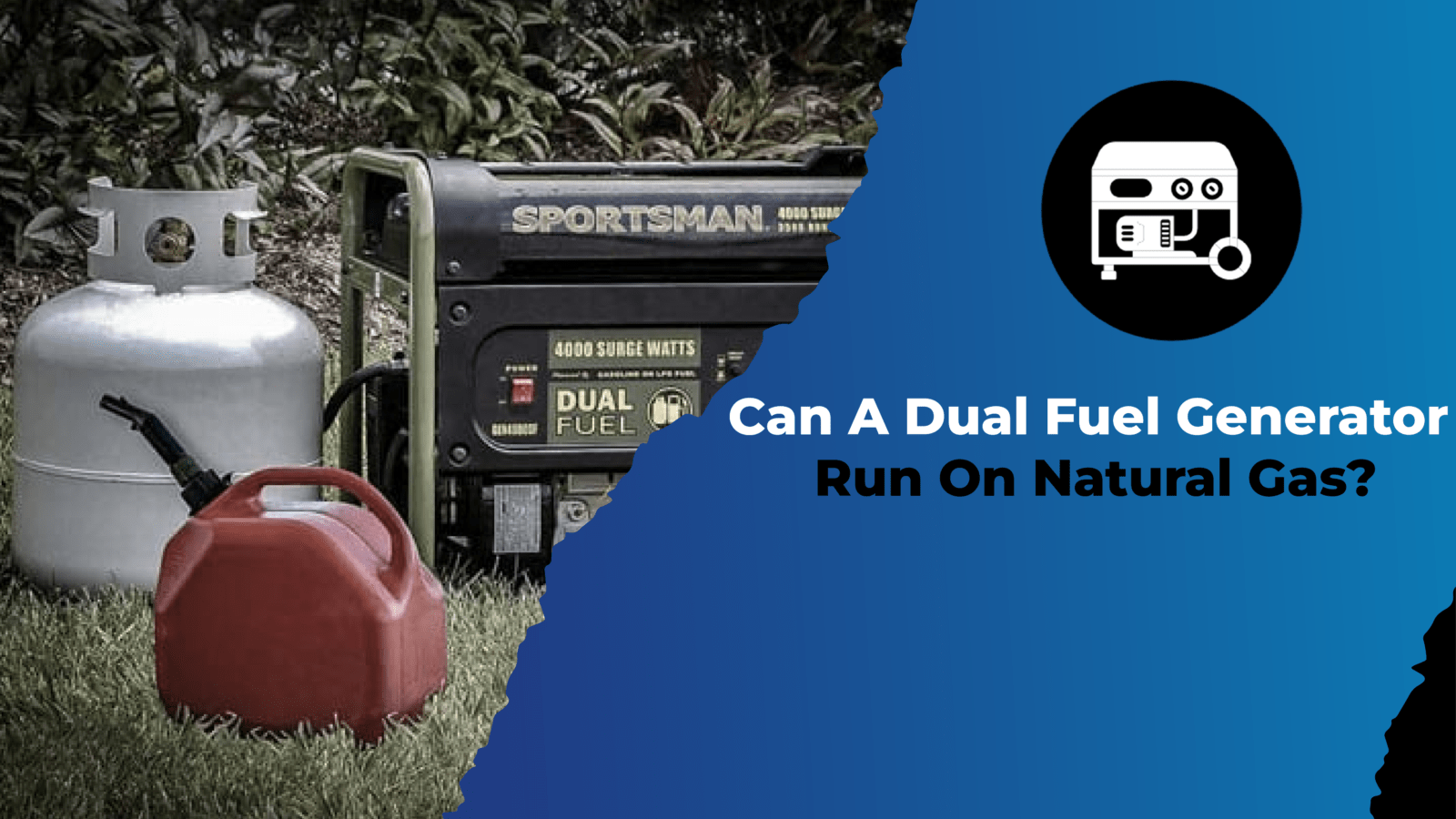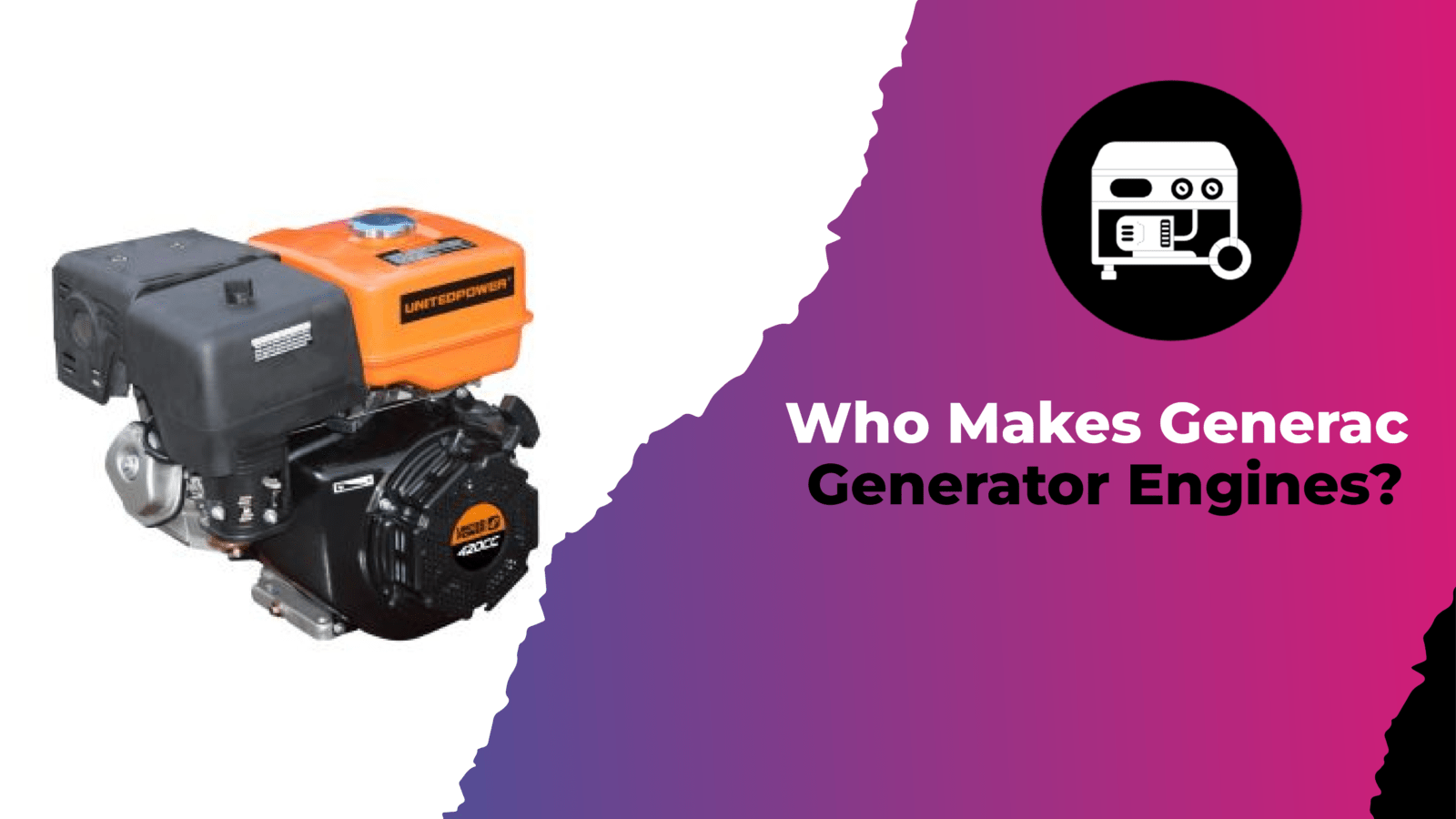When there is a blackout, we all need something that provides electricity to our appliances. And this is possible only by using generators. There are two types of generators: inverters and regular ones. Usually, people use conventional generators to fulfil their electric demands. Everyone knows such generators may be cumbersome, noisy, and use more petrol or gas.
We all want something new that uses less petrol, must be less noisy and is made of the latest technology, and you will find all these features in inverters. A simple generator is helpful in certain situations, but an inverter generator might be even better in others, especially in homes or offices.
Once you know how generators work, you will quickly decide which is better. Here we will discuss the difference between an inverter and a generator and the working of inverter generators.
What are Inverter generators?
The generators which have inverters are termed Inverter Generators. They are portable power sources that convert (invert) DC to AC, resulting in clean, reliable energy. The power produced by the inverter in the pure and stable sine wave With this innovation, the generator’s engine speed may be regulated according to the current demand for electricity, leading to quieter and more effective performance.
Due to their compact size and low weight, inverter generators are perfect for camping and RV travel. The inverter generators come from 1300 watts to 3800 watts.

How do Inverter generators work?
The working principle of Most standard generators is to receive electricity from the fuel supply and then be converted it to AC power. But in the inverter generator, you can find a difference in their working than the other generators. An inverter generator uses a battery, alternator, and an inverter to transform DC electricity from a petroleum engine, solar generator, or automobile battery into AC power. Although it uses more complicated mechanics. Here is how the inverter works:
- To produce mechanical energy, the inverter generator’s engine uses fuel.
- The engine’s mechanical energy turns a rotor within an alternator to create an alternating current.
- A rectifier transforms AC alternator power into DC electricity.
- After the rectifier converts DC electricity to DC, it is transferred to an inverter and transformed into AC power.
- The generator’s outlets receive the inverter’s AC electricity, which powers electrical items.
This 5-step procedure reduces harmonic distortion in electrical current. To put it another way, it has a greater degree of consistency. Power quality may be quantified by measuring the amount of harmonic distortion in power produced. The power produced by a generator with minimal harmonic distortion of less than 6% is comparable to the electricity supplied by your utility company.
Using conventional generators results in significant harmonic distortion, about 25%, which is acceptable for operating larger electronics like refrigerators and construction machines. However, if you’re using the same source to power smaller gadgets like computers, tablets, and phones, the harmonic distortion in the signal might harm the delicate microprocessors within. For this reason, consider getting an inverter generator.
Inverter generators are advantageous since they produce a sine wave with considerably more consistent frequency. This regulation also helps the system use less energy. Inverter generators maintain a constant 3,600 RPM while adjusting their voltage to meet load needs.
A regular generator cannot do this, which is also why they are so noisy. Because of their unique design, inverter generators are often much quieter than conventional ones.
Inverter vs Regular generators
After knowing what inverter generators are, let’s compare them with regular ones. Here is the difference between these two:

1. Design
Inverter generators often weigh less than 100 pounds compared to conventional generators and take up much less space. Inverter generators are ideal for camping and RV trips since they are portable. The regular generators are very loud. They are primarily used in construction sites. Inverter generators are either closed-frame
2. Noise level
Compared to conventional generators, inverter generators often produce less audible noise levels. This holds the truest for closed-frame designs. Inverter generators are very desirable because of their minimal noise output.
However, many conventional generator models include noise reduction options.
An inverter model is often your best solution if you need a generator but are concerned about noise levels. The noise level of a regular generator is about 65 dB.
3. Fuel efficient
An inverter generator is your best option if you’re searching for a generator that uses very little fuel. Inverter generators never consume more fuel than necessary since they can vary their motor speeds.
In contrast, most conventional generators provide constant electricity 24/7, regardless of demand. Thus, fuel savings will likely compensate for a large portion of your inverter generator’s purchasing price.
Inverter generators often produce fewer toxins than other kinds of generators and are, therefore, more environmentally friendly.
4. Run time
Keep in mind that the generator’s runtime is affected by several variables, such as the fuel tank’s capacity, the kind of fuel, and the load.
Thus, neither inverters nor conventional generators stick to a universally accepted maximum operating time. Still, on average, inverter generators can power appliances for far longer than conventional generators can.
The capacity of inverter generators to minimize output in response to a drop in demand for electricity is mainly responsible for this.

A regular generator will have a running time of around 6-10 hours on average, whereas an inverters generator will have a running time of about 10-16 hours on average.
That additional four to six hours of run time makes a difference. Still, how much of a difference depends on the circumstances you find yourself in and the purpose for which you are utilizing the generator.
5. Power
In comparison, their huge storage tanks significantly increase conventional generators’ output. Since inverters are more efficient, they can provide the same run time even on smaller tanks. As a result of their bigger size, conventional generators may produce much more power—up to 10,000 watts in some instances. Standard inverter generators have a 7,000-watt output limit. Conventional generators are often the most reliable option for tasks requiring a lot of electricity.
How Does An Inverter Generator Work – FAQs
Our Verdict
Camping and RV trailers consider inverter generators are the best selling point, and they are also helpful at home if power outages are common in your town. These generators use the inverter to convert AC into DC and provide clean power to your home.
The inverter and regular generators have their benefits and disadvantages, but we like the inverter the most!






